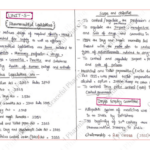A common technical document (CTD) in regulatory affairs is a comprehensive dossier that provides essential data and information about a pharmaceutical product or medical device to regulatory authorities. This document is used to support the approval and registration process of these products in various countries and regions, ensuring their safety, efficacy, and quality.
The CTD follows a standardized format established by the International Council for Harmonisation of Technical Requirements for Pharmaceuticals for Human Use (ICH). It consists of five modules, each containing specific information related to the product and its development. Let’s examine each module in detail:
1. Module 1: Administrative and Prescribing Information:
This module includes administrative documents, such as the application form, product description, and legal manufacturing and marketing authorizations. It also contains prescribing information, such as the product’s name, dosage form, strength, route of administration, indications, contraindications, and precautions.
2. Module 2: Quality Overall Summary (Module 2.3) and Nonclinical Summary (Module 2.4):
Module 2 provides a comprehensive overview of the quality, safety, and efficacy of the product. The Quality Overall Summary (QOS) details the manufacturing process, control of critical quality attributes, and drug substance and product specifications, among other quality-related aspects. The Nonclinical Summary summarizes the nonclinical studies conducted to assess the safety and pharmacology of the product.
3. Module 3: Clinical Summary (Module 2.5) and Clinical Study Reports (Module 5):
Module 3 contains the Clinical Summary, which provides a synopsis of the clinical development program and the key findings from clinical trials. This module also includes the Clinical Study Reports (CSRs), which provide detailed information on the design, methodology, and results of individual studies. CSRs should follow the International Conference on Harmonisation (ICH) guidelines for clinical trial reporting, ensuring that the data is presented in a concise and standardized manner.
4. Module 4: Nonclinical Study Reports (Module 4.2) and Overall Nonclinical Summary (Module 2.6):
Module 4 includes the complete nonclinical study reports, providing detailed information on the safety, toxicology, and pharmacokinetics of the product. These reports summarize the findings of nonclinical studies conducted in animals, assessing the product’s potential toxic effects, target organ toxicity, genotoxicity, carcinogenicity, and reproductive and developmental toxicity. The Overall Nonclinical Summary provides an integrated assessment of the nonclinical data, drawing conclusions on the product’s safety profile.
5. Module 5: Clinical Study Reports (Module 5.3):
Module 5 includes additional clinical study reports for all pivotal clinical trials conducted on the product. These reports are more comprehensive than the clinical summaries in Module 3 and provide a detailed analysis of the study design, patient population, efficacy results, safety profile, statistical analyses, and any other pertinent findings.
Overall, the CTD is a vital document in regulatory affairs as it demonstrates the safety, efficacy, and quality of pharmaceutical products or medical devices. It enables the regulatory authorities to evaluate and make informed decisions regarding the approval and commercialization of these products, ensuring their compliance with regulatory requirements and protecting public health.










